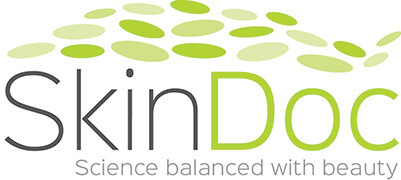Restoring a More Youthful Look with Facial Volumising Treatments
Facial volumising treatments are non-invasive treatments used to restore youth and volume to your face. The treatment restore volume and plumpness to lips, cheeks, chins, jawline and the area under the eyes and nose. This is done to combat the signs of aging when our skin begins to lose natural hydration and elasticity.
At SkinDoc, we perform this procedure in our Liverpool clinic, conveniently located for Narellan, Fairfield and Bankstown residents.
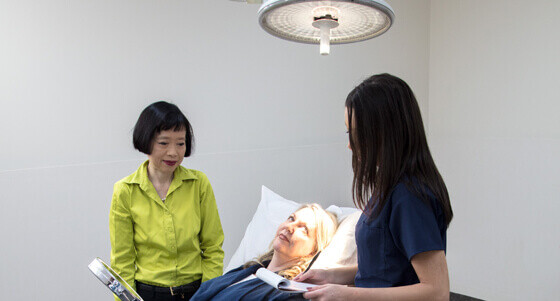
What are facial volumising teratments used for?
Facial volumising treatments are used to enhance and rejuvenate areas such as the lips, cheeks, tear trough, nasolabial folds and correct wrinkles around the mouth. In the eyebrow area, they can be used under the eyebrows to give an eyebrow lift or to fill in any hollows in this area. Jowls and marionette lines as well as permanent frown lines can be diminished with facial volumising treatments. Facial volumising treatments can be used in reshaping the nose and in chin enhancement.
Permanent treatments have a greater rate of serious complications such as infection and swellings. We do not encourage the use of these treatments.
Facial volumising treatment products are categorised on the basis of duration of action:
- Short acting: less than 4 months
- Long acting: 6 months to 1 year
- Semipermanent: 1 to 2 years
- Permanent: 2 years or more
The science of facial volumising treatments
The most common facial volumising treatment is Hyaluronic acid HA. HA is a naturally occurring glycosaminoglycan that is abundant in human connective tissue. It has little or no potential for immunologic reaction in humans when injected. HA stabilises the dermal extracellular matrix providing structural support in which collagen and elastic fibres are embedded.
HA encourages cells to proliferate and migrate and is involved in tissue repair. HA concentration in the skin decreases with age leading to reduction in dermal hydration which manifests as increase in lines and wrinkles as well as folds. The mechanism of action as a treatment is mainly via hydration.
HA is manufactured as multiple polymers that are bound together similar to a string of beads. It is a liquid in the non-crosslinked form. Cross-linking HA increases the cohesion of the product and transform from a liquid into a gel. The hardness of the gels relates to the amount of crosslinking. The greater the amount of crosslinking the harder the gel. The concentration of the HA and the size of gel particles also influence the hardness of the gel.
NASHA
This stands for non-animal stabilised hyaluronic acids and are a safe, reliable class of facial volumising treatments that have a low potential to cause allergic reactions. They are commonly used to correct moderate to severe facial lines and restore volume loss that occur during natural ageing.
NASHA facial volumising treatments are non-permanent, safe and give reliable and consistent results in their volumising capacity. They tend to confer a softer and more natural look.
Choosing the correct NASHA
The higher the concentration of HA the stiffer the product and the longer it lasts. The larger the particle and the greater the concentration of HA, the greater the lift in the skin will occur.
Another factor to consider is the amount of free HA that is not crosslinked. If the HA is free, fragmented or lightly crosslinked therefore the gel can flow out of the syringe with ease. It is the amount of crosslinking that determines the longevity of the product.
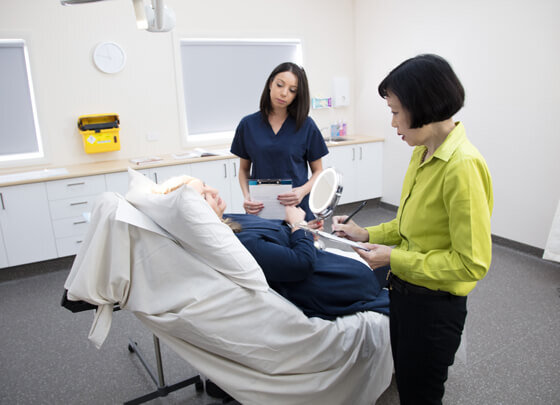
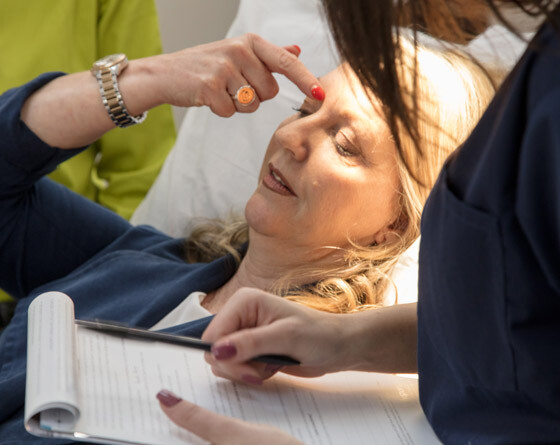
Patient Evaluation
A careful medical history is done during the patient consultation. You will be asked about a history of herpes simples (cold sores), pregnancy and breastfeeding, keloids and the presence of any autoimmune disorders such as lupus. Any allergy to lidnocaine will exclude you from this treatment as most of the facial volumising treatments are premixed with this local anaesthetic agent.
Medications that can increase the risk of bruising include multivitamins, fish oil, vitamin E, blood thinners, aspirin, nonsteroidal anti-inflammatory drugs and Gingko biloba. If you are on any of these medications it is advisable that they are ceased at least 14 days before treatment. Alcohol should be avoided at least 48 hours before treatment as it can increase the risk of bruising.
If you have a past history of a facial volumising treatment we will document this in your medical notes which will include when, where was the treatment placed and if you were satisfied with the results.
Pre-treatment photographs
At least 3 photographs will be done: left side, right side and an oblique view. If you are having a specific area corrected, a close-up photograph will be done of that area.
Rejuvenation Management Plan
Any facial asymmetry at baseline will be discussed with you and noted in your notes. Your desires and expectations are carefully documented and discussed with you. A management plan is then formulated and a copy is given to you.
The type of facial volumising treatment and wrinkle reducing treatment will be outlined as well as the amount required will be documented. The cost of each treatment will be documented in your management plan. The possible side effects and the necessary aftercare will be in your management plan.
The facial volumising treatment may involve the use topical numbing cream of local anaesthetic injection prior to the injection of the treatment.
Treatment times can vary but generally takes from 30 to 60 minutes.
Facial volumising treatment sometimes requires more than one session. You will be asked to return for review a few weeks later.
Informed Consent
This will be obtained prior to any procedure. Financial cost will be given in writing in your Rejuvenation Management Plan.
Where are facial volumising treatments used?
Facial volumising treatments are used to fill or replace the lost of volume in certain areas of the face. Facial volume loss occurs in the ageing process.
Common areas for HA treatments are cheeks, followed by nasolabial folds, meilolabial folds, chin and lips. HA fillers can last from 3 to 18 months depending on location and amount of product previously injected. They last longer in areas of low mobility and shorter in areas of greater movement.
Post facial volumising treatment care
NASHA or HA treatments are safe, effective and easy to use. Complications are rare and are generally limited to oedema (swelling) and bruising.
After the procedure you will be asked to apply an ice pack to the area for up to 10 minutes every hour. In certain areas such as the lips you will be encouraged not to purse your lips or fold them on top of one another for up to 6 hours.
The following day you will be advised to expect additional swelling as hydration occurs. This may result in some soreness. Bruising may occur up to 72 hours after the procedure.
Certain areas are best avoided such as the glabella area. Although rare, injections into an artery can occur.
What are the potential complications of temporary facial volumising treatments?
Acute injection site reactions such as mild to moderate swelling or bruising are common. They usually last for less than 7 days.
Superficial or inappropriate placement of the temporary treatment can cause lumpiness, nodularity or visibility of treatment. When the HA product is placed too superficially, a nodule with the Tyndall effect can occur resulting in a visible bluish bump. Proper injection technique in experienced hands can minimise this risk. Post-procedure massage can mitigate the appearance of lumpiness.
Hypersensitivity reactions
The risk of hypersensitivity reactions is rare but is increased, in theory at least, when patients wear make-up as these substances can be implanted into the dermis during treatment procedures. Therefore, patients must be make-up free at the time of injection.
Pro-inflammatory medications
Patients need to be aware certain medications taken after the facial volumising treatment procedure can lead to an increased risk of hypersensitivity reactions if they take proinflammatory medications. Hypersensitivity reactions have known to occur up to 10 years after the facial volumising treatment procedure. Therefore, it is important that a medical practitioner reviews your medical history during the discussion on dermal fillers.
Infection is a rare complication but may be due to reactivation of a common virus, herpes simplex (cold sores).
Contamination may occur in non-TGA approved imported products. Our practice only used TGA approved facial volumising treatment.
Necrosis
Injection of facial volumising treatment into a vessel or infiltration of tissue with sufficient volume to compress blood flow poses a risk of necrosis. In experienced hands, such as dermatologists this is unlikely to occur. In the event it does occur topical prescription vasodilators or injection of solution that reverses the HA treatment may reverse the impending necrosis. Injection of a prescription anticoagulant by the physician can promote clot resorption in recalcitrant cases.
Note: Prescription drugs can only be administered by medical practitioners.
Protocol for delegated cosmetic S4 treatments
We are fortunate to have a suitably trained registered nurse who can administer S4 medications for cosmetic purposes after consultation with the dermatologist face-to-face with the patient and a formulated written management plan documented.
- Time period no greater than 1 year
- The areas to be treated
- The medications to be used
- The maximum number of procedures
- The maximum dosages of the medications to be administered
Hyaluronic acid
Hyaluronic acid treatments have low potential for allergic reaction and do not require skin testing. HA is a naturally occurring glycosaminoglycan that composes the extracellular matrix of connective tissues in the skin, to provides structural support and volume as well as maintaining and attracting moisture. When HA is injected into the skin it replenishes volume and rejuvenates the skin. The various HA treatments differ in their total concentration of HA and the degree of crosslinked material. The total HA concentration refers to the amount of insoluble HA and soluble HA in a product. The soluble HA is absorbed rapidly and is added to some products to improve lubrication and flow through the needle. The insoluble gel portion persists in the skin after injection and gives the volumizing effect. HA treatments are injected mid to deep dermis for the correction of moderate to severe facial wrinkles and folds such as the nasolabial folds.
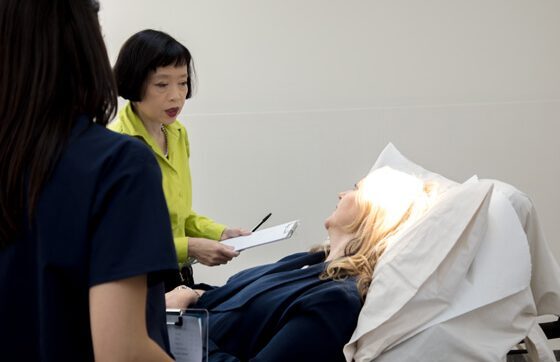
Medications, herbs and supplements can increase the risk of bleeding during cosmetic procedures.
TGA legislation does not allow us to name prescription medications. Therefore, you need to seek advice from your registered medical practitioner.
The following herbs and supplements are known to increase bleeding:
- Arnica – when used with anticoagulants
- Alcohol
- Ginger
- Ginseng
- Garlic
- Gingko biloba
- Kava kava
- Celery root
- Fish oils
- St John’s wort
- Vitamin E
- Feverfew
- Dong quai
We recommend that patients who are contemplating cosmetic procedures cease the use of the above herbs and supplements. Medications that increase the risk of bleeding need to be discussed with the medical practitioner before any changes are made.
Book your facial volumising treatments at SkinDoc in Liverpool
If you are interested in facial volumising treatments or any other cosmetic treatment, such as collagen stimulating treatments or skin smoothing treatments, get in touch with our clinic today. No matter if you’re in Narellan, Bankstown or Fairfield, we are conveniently located.
